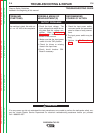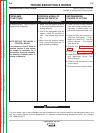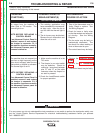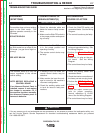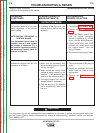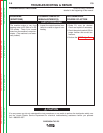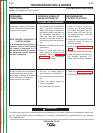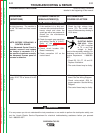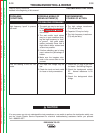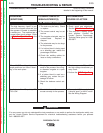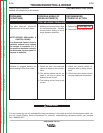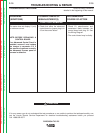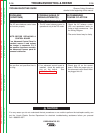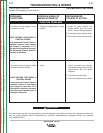
F-12F-12
PRECISION TIG 275
TROUBLESHOOTING & REPAIR
Observe Safety Guidelines TROUBLESHOOTING GUIDE
detailed in the beginning of this manual.
If for any reason you do not understand the test procedures or are unable to perform the test/repairs safely, con-
tact the Lincoln Electric Service Department for electrical troubleshooting assistance before you proceed.
Call 1-888-935-3877.
PROBLEMS
(SYMPTOMS)
POSSIBLE AREAS OF
MISADJUSTMENT(S)
RECOMMENDED
COURSE OF ACTION
TIG WELDING PROBLEMS
High frequency “spark” is present
but weak.
1. The spark gap may be too large.
Check and reset per instructions
in the Maintenance Section of
this manual.
2. The work and/or torch cables
may be in poor condition allow-
ing the high frequency to “leak”
to ground. Use good quality
cables, preferably those with a
high natural rubber content and
as short as possible.
3. If helium shielding gas is being
used, reduce the percentage of
helium.
4. Make sure the tungsten elec-
trode is the correct size for the
process.
1. The high voltage transformer
(T2) may be faulty.
2. Capacitor C6 may be faulty.
3. The high frequency transformer
(T3) may be faulty.
Poor arc starting in the DC TIG
mode.
1. The input line voltage may be
low.
2. Check the torch and work cable
for loose or faulty connections.
1. Check the J11 plug on the con-
trol board. See Wiring Diagram.
2. Check the background resistor
R7. Normal resistance is 20
ohms.
3. Check the background diode
bridge.
Return to Section TOC Return to Section TOC Return to Section TOC Return to Section TOC
Return to Master TOC Return to Master TOC Return to Master TOC Return to Master TOC
CAUTION



